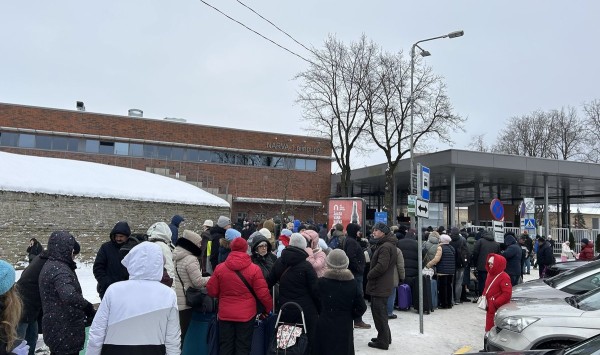TARTU – According to a group of Moscow researchers, the territory on which “truly Russian genes” predominate is roughly equal to that of the space occupied by Rus’ under Ivan the Terrible – only one of their findings likely to spark controversy in today’s much larger Russian Federation.
In the current issue of “Kommersant-Vlast’,” Dar’ya Laane and Sergei Petukhov report on the efforts of the Laboratory of Population Genetics of the Russian Academy of Medical Sciences over the last few years to develop a genetic map of the Russian nation .
Hobbled first by Soviet ideological objections to genetics as a science, then by concerns that any study of the Russian nation as a whole could prove politically explosive, and most recently by a lack of resources, Russian scholars until very recently had lagged behind those elsewhere in carrying out such research.
Indeed, until the late 1990s, Russian population geneticists had been forced to limit their research either to relatively small ethnic communities or to Russian groups within particular regions rather than in the country as a whole. Now, however, Moscow scholars have been able to collect and assemble data for the Russian nation as a whole.
Some of their findings leaked out to the press earlier this year, and many others remain tightly held because of restrictions imposed by Western funding agencies. But “Kommersant-Vlast’” has reviewed the latest Russian research in this area which the paper suggests could have “unpredictable consequences for Russia and the world order.”
On the basis of a relatively small sample of the distribution of mitochondrial DNA – the size of even this sample was limited by the availability of funds -- the scholars concluded that they could use the distribution of family names as a marker for the country’s genetic borders.
Each of the regions assembled lists of names carried by at least five families over three generations or more. When the Moscow scholars compared these lists and then combined them into a single name list for the Russian nation as a whole, they came up with several intriguing findings.
First, they discovered that the majority of these 15,000 Russian family names were found in one region rather than across several or all of the five regions in which the data was initially aggregated.
Second, they found that the most common name was not Ivanov as many might have assumed but rather Smirnov. That finding, which leaked last summer, generated both outrage and derision in the Russian media.
And third, the Moscow scholars found that in terms of frequency, the names of Soviet and Russian leaders rank far down on the list. The name Lenin was in 1421st place, that of Stalin was not surprisingly absent, that of Khrushchev was in 4248th place, and that of Brezhnev was in 3767th place.
Among other Soviet leaders, the name Chernenko was the 4749th most common and that of Andropov stood in 8939th place. Only Mikhail Gorbachev, the last Soviet leader, broke into the top 250 names among Russians across the country: his name was in 158th place.
The two Russian presidents so far also have names which rank far down the list in terms of the frequency with which they are to be found in the Russian population: Boris Yeltsin’s last name is not to be found anywhere among the top 15,000, and Vladimir Putin’s name stands at 14,250th place among all Russian names.
The Moscow researchers also considered the genetic “distance” between Russians and neighboring peoples, a measure of the number of Y-chromosome genes that they have in common. Genetically, they reported, Russians are equally distant from Finns and Kazan Tatars but far closer to the Finno-Ugric peoples of the Middle Volga.
That reality by itself means, the two “Kommersant-Vlast’” journalists argue, that complaints by Estonia, Finland and Hungary about Russian mistreatment of the Mari, Mordvin and Udmurt communities are without foundation, a clear indication that some consumers of this genetic information may seek to put it to political use.
Yet another portion of the new findings that could suffer the same fate concerns the territory in which “truly Russian genes” are predominant. That area, the Moscow researchers say, is roughly coterminous with 16th century Rus’, an indication the journalists say of the “conditionality of certain state borders.
Finally, the researchers report that within that geographic space, people with a “truly Russian” genetic make-up predominate only in smaller cities and rural areas. The cities, these investigators suggest, are now “black holes that are swallowing up the genetic fund of the Russian people and destroying it without a trace.”
As a result of their conclusions, “Kommersant-Vlast’” reports, the researchers are appealing to President Vladimir Putin and other Russian leaders to provide more funds so that Russian women outside the biggest cities will have more children and thus “save the Russian gene fund from further degradation.”
Mapping Russia's ';genetic'; borders
Archived Articles | 21 Oct 2005 | Paul GobleEWR
Archived Articles
TRENDING


















